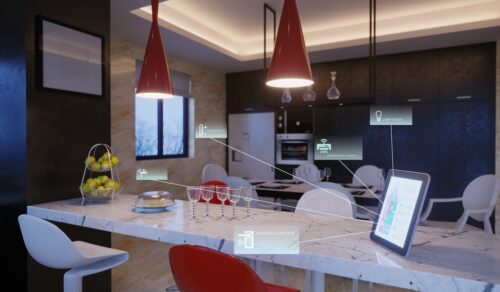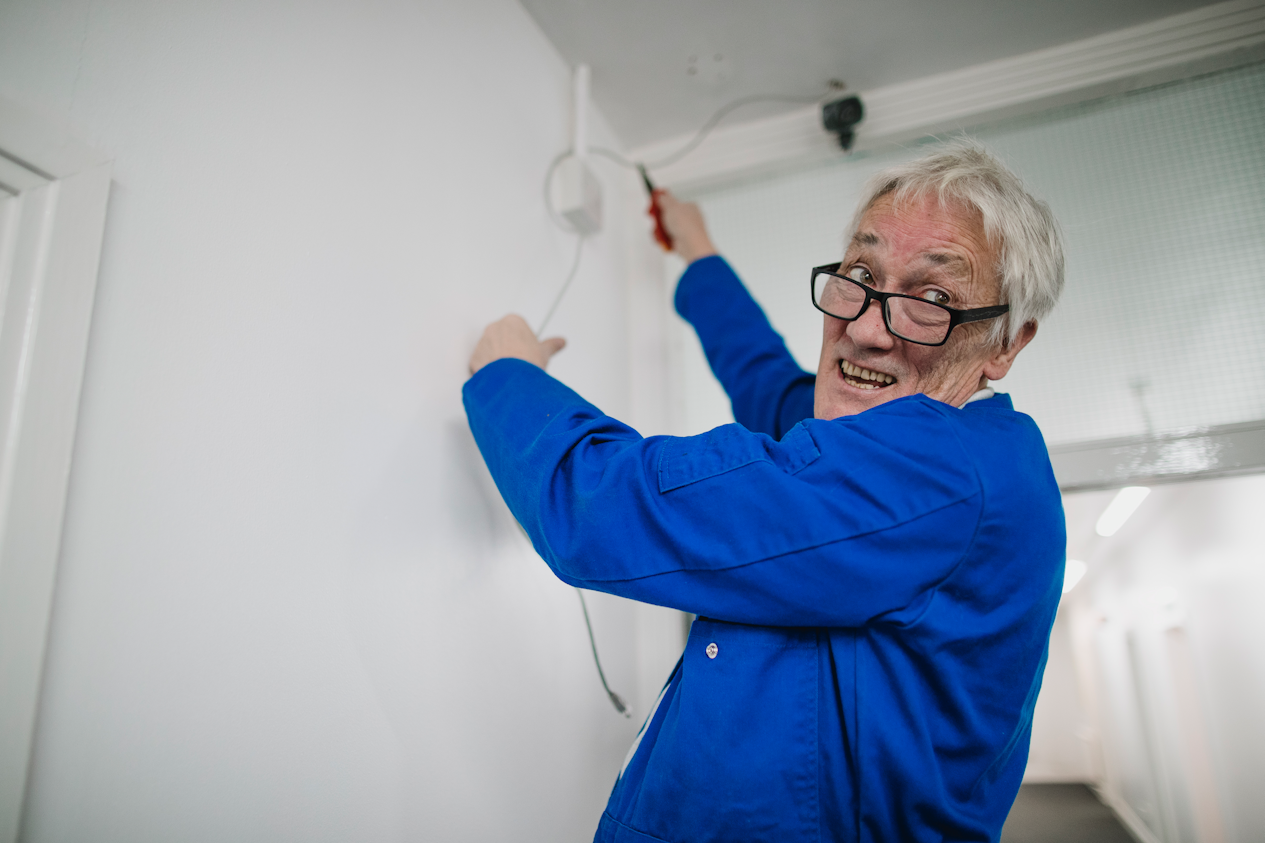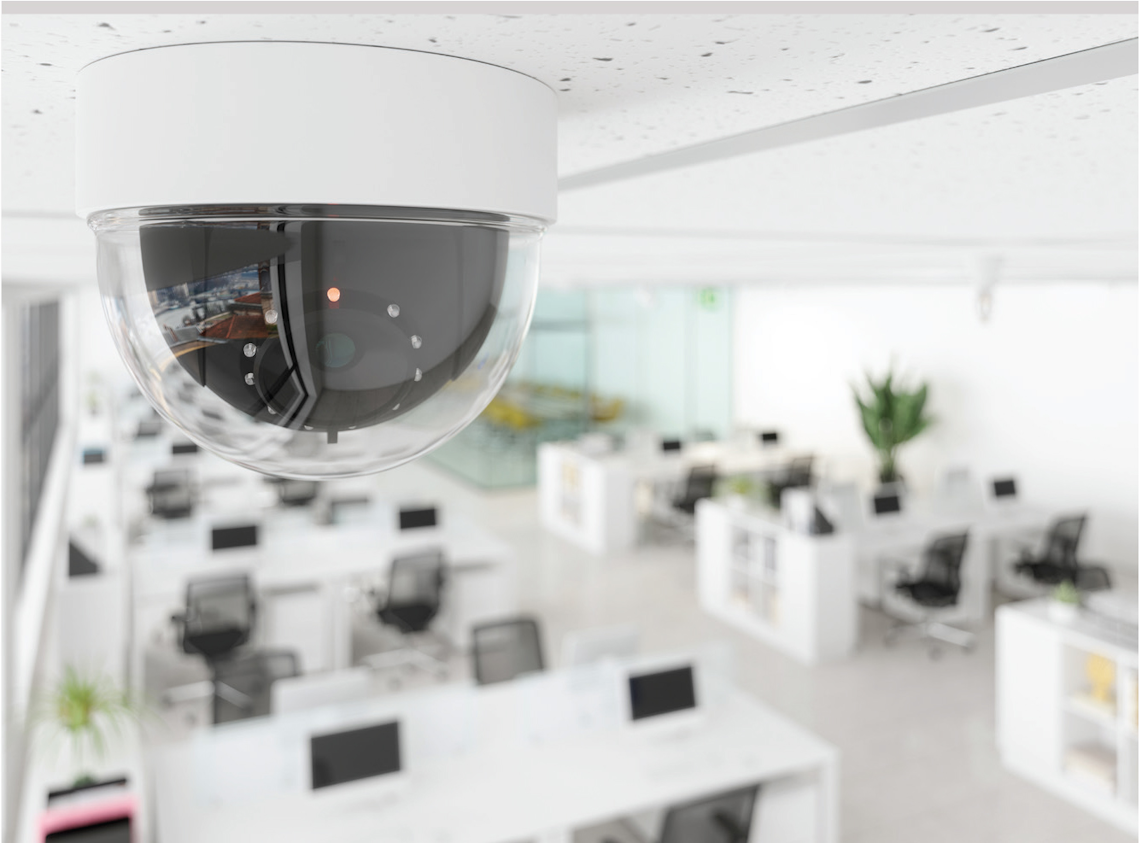
2.11.22 – SIW
As CES wraps up, two integrators weigh in on trends, technologies and changes in the residential market
This article originally appeared in the February 2022 issue of Security Business magazine. When sharing, don’t forget to mention Security Business magazine on LinkedIn and @SecBusinessMag on Twitter.
Integrating IoT devices and wireless technology was a game-changer for the smart home and automation market. Single devices and entire systems are changing the way people live while making a home more secure, energy-efficient, comfortable and convenient. Panels and voice assistants control systems within the home, while a smartphone app does the same from virtually anywhere.
Motion sensors warn of possible break-ins while automatically illuminating entries when family members arrive home at night. Working parents can use their smartphones and in-house cameras to see that their school-age children arrive home each afternoon and that elderly grandparents enjoy breakfast and take their pills each morning.
Homeowners use video doorbells to see and speak with people at the front door. Smart thermostats enable a homeowner to control interior temperatures from the bedroom or a cruise ship sundeck.
These and many other capabilities have the smart home market booming. More than 22 million U.S. homes own more than one smart home product, and many homebuilders now routinely add a variety of devices to new houses.

– Rob Bowlin, Quantum Security and Innovations
All this technology comes with a price. The national average cost to automate a home starts at about $2,000 and can go much higher for more devices or coverage of larger houses. However, energy savings help homeowners recoup the cost of a smart thermostat in less than two years. Additionally, smart devices have proven to increase a home’s resale value. Some insurers reward homeowners using smart technology by reducing their premiums.
I recently caught up with two independent Alula dealers to gain more insight into this market: Rob Bowlin, president and CEO of Matthews, N.C.-based Quantum Security and Innovations; and Matthew Toth, managing partner of Turnip Home, based in Edmonton, Canada.
The integrators say there is not much difference in the systems city, suburban or rural homeowners choose; however, there are differences between generations. Bowlin says his 55-plus-aged customers focus more on home security, while “millennials are much more into convenience,” he explains.
“They want smart products and sensors that automatically control temperature and lighting and start the coffee brewing in the morning,” he adds. “They want it all integrated so they can take control with one smartphone app or a voice assistant.”
Both integrators agree their best-selling items are video doorbells which enable homeowners to see and speak with people at the front door.
“It is rare to cross paths with somebody who doesn’t want a live view of the front of their home,” Toth says.
Video analytics is also a hot technology, which Bowlin says adds a valuable layer of protection.
“Outdoor cameras that detect someone getting too close to the front door or a car parked in the driveway sounding a tone letting the person know they are under surveillance,” he says. “That discourages most would-be criminals.”
Here are their takes on more of the hot trends, technologies and challenges facing integrators in the smart home space:
3G Sunset
The 3G sunset impacting system communicators begins at the end of February for AT&T customers in the United States. Verizon is expected to follow in late 2022.
Toth says the sunset will not occur in Canada until 2024, allowing him to see how his U.S. colleagues handle the situation.
“We have had manufacturers try to sell us the 3G products they cannot use anymore in the U.S.,” he says. “For us, that could be more of a headache than a value-add, even if the equipment comes with big discounts.”
Bowlin says delays in receiving technology due to supply chain shortages and delays in shipping from other countries are causing him to scramble to get the necessary 4G or 5G radios; however, he expects to meet the deadlines.
Working with New Home Builders
Leading smart home system manufacturers have builder programs that link dealers with new home builders. Bowlin says new home construction is increasing his company’s business.
“With the price of new homes routinely topping $400,000 in our area, buyers expect smart home technology to be included in the price, not as an optional upgrade,” he says. “Most builders have us add two or three devices – a

– Matthew Toth, Turnip Home
smart door lock, thermostat and maybe a video doorbell. But we work with some builders that go all out, with wireless mesh networks, cameras and a variety of sensors.”
Toth says it is not unusual for buyers to ask his company to install more components before moving into the home. “We provide buyers with live functioning automation and video solutions from the day they receive their keys,” he says.
He adds that the upgrades are often added from the back-end, enabling new features and settings without sending a technician to the home.
DIY & Big Box Competition
Big Box home improvement and electronic retailers offer individual components or complete DIY systems for customers confident in their installation abilities; yet, many homeowners prefer to work with professional dealers who install the latest equipment from leading manufacturers.

Bowlin says he sees some competition from the DIY market – particularly with video doorbells; however, it is not causing his business significant problems.
Toth says Turnip Home has embraced a DIY program, working with a manufacturer to provide equipment for customers to install on their own. “We pre-program everything before we ship it,” he says. “We have what’s closer to a do-it-with-me (DIWM) model, with us being there to help customers along the way. You are not going to get that with one of the Big Box electronic retailers. Our customers prefer a full-service solution for their security needs.”
Turnip Home also maintains an extensive online video database with tutorials aimed at helping DIY customers complete system or component installations.
COVID-19
The COVID-19 pandemic increased the demand for home security options, as millions of people added expensive office equipment required to work from home.
“We have noticed an increased need for protection within our communities,” Toth says. “Today, as opposed to 10 years ago, we have so much more to offer customers through automation and video services. I see that becoming more important in the years to come.”
Bowlin says that while the virus mildly impacted his staff, it didn’t hurt business. Revenue was up 15% last year as opposed to 2020. “We were over the top with sales of home automation systems,” he says.
SMB Market
The integrators say they provide security services for small and medium-sized businesses. Toth says continuous lockdowns due to the pandemic in Canada created a greater need for security. Turnip Home has seen a “huge” increase in SMB business over the past two years.

“Our SMB customers are looking for full-time video recording solutions,” Toth says. “They need to prove that someone from outside the company broke into their business and that it wasn’t a crime committed by an employee. Intrusion sensors are always tied to the video, because they let the customer know when someone does break into the business.”
Bowlin says his company focused on building relationships with new home builders in 2020. “But we are getting back into SMB installs and expect to see a big increase in that business in 2022,” he adds.
RMR Generation
Additional recurring revenue results from selling more equipment and services to existing customers and new homebuyers. Toth says offering 36- to 60-month financing programs generates RMR and creates a long-term customer commitment. System monitoring is another recurring revenue generator. Toth says 99% of his residential and SMB customers want Turnip Home to monitor their systems. “We very rarely have an unmonitored system,” he explains.
System monitoring also provides a source of RMR for Quantum Security and Innovations. Bowlin says the company also uses social media to reach out to customers with news of new products and services, effectively creating sales of new equipment and recurring services.
Related Services
Toth says Turnip Home is expanding its offering beyond home and SMB systems to include Personal Emergency Response Systems (PERS).
“Safety and security go hand-in-hand,” Toth says. “Some seniors find the security technology a little bit too much to handle. But they appreciate a pendant or waistband that enables them to summon help quickly.”
Monitoring the devices provides another RMR source.
Not often thought of as a solar panel hotspot, Canada is making more federal and provincial grants available to homeowners installing systems. Looking to get an early start on a burgeoning business, Toth says Turnip Home will begin panel installations this spring.
Coming soon
Toth sees more Canadian telecommunications companies getting involved in the smart home business. While initially viewing the added competition as a threat, he says he now welcomes it.
“It is going to make our jobs easier,” he says. “[Telecoms] are in it just for the RMR. When they install on such a large scale, the level of service their people provide is not the same as ours. If we get a service call, we will respond in 24 to 48 hours – not two to three weeks down the road.”
Bowlin predicts more installations of environmental sensors.
“Today’s WiFi-connected homes make it easy to add wireless sensors under the water heater, and in bathrooms and kitchens,” he says. “If there are leaks, homeowners get immediate notices on their smartphone. By acting quickly, they can protect against costly water damage.”
Warren Hill is VP of Marketing and Partner Development for residential security and system communications provider Alula. Request more info about the company at www.securityinfowatch.com/12070939.
